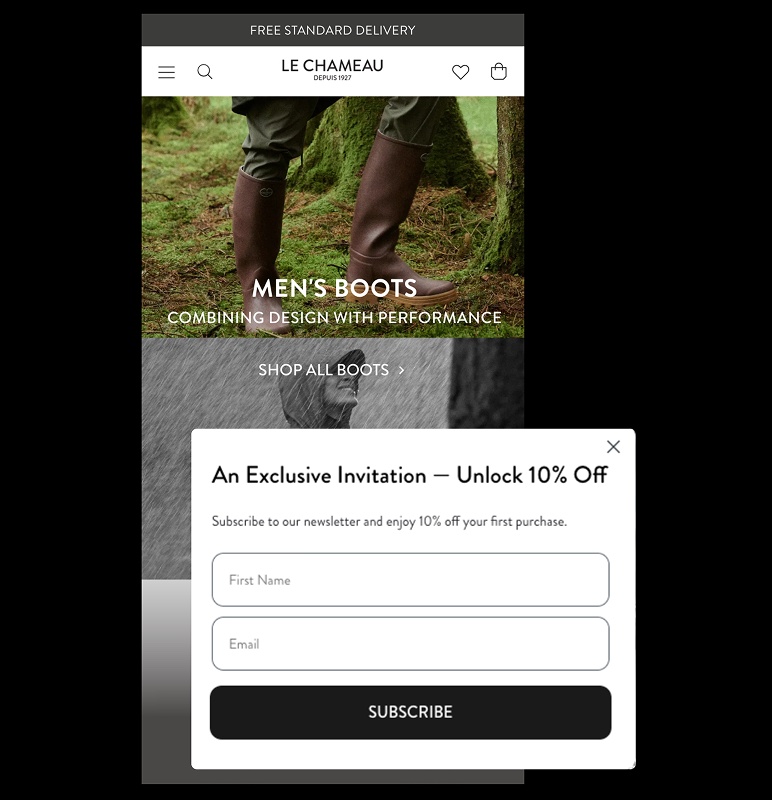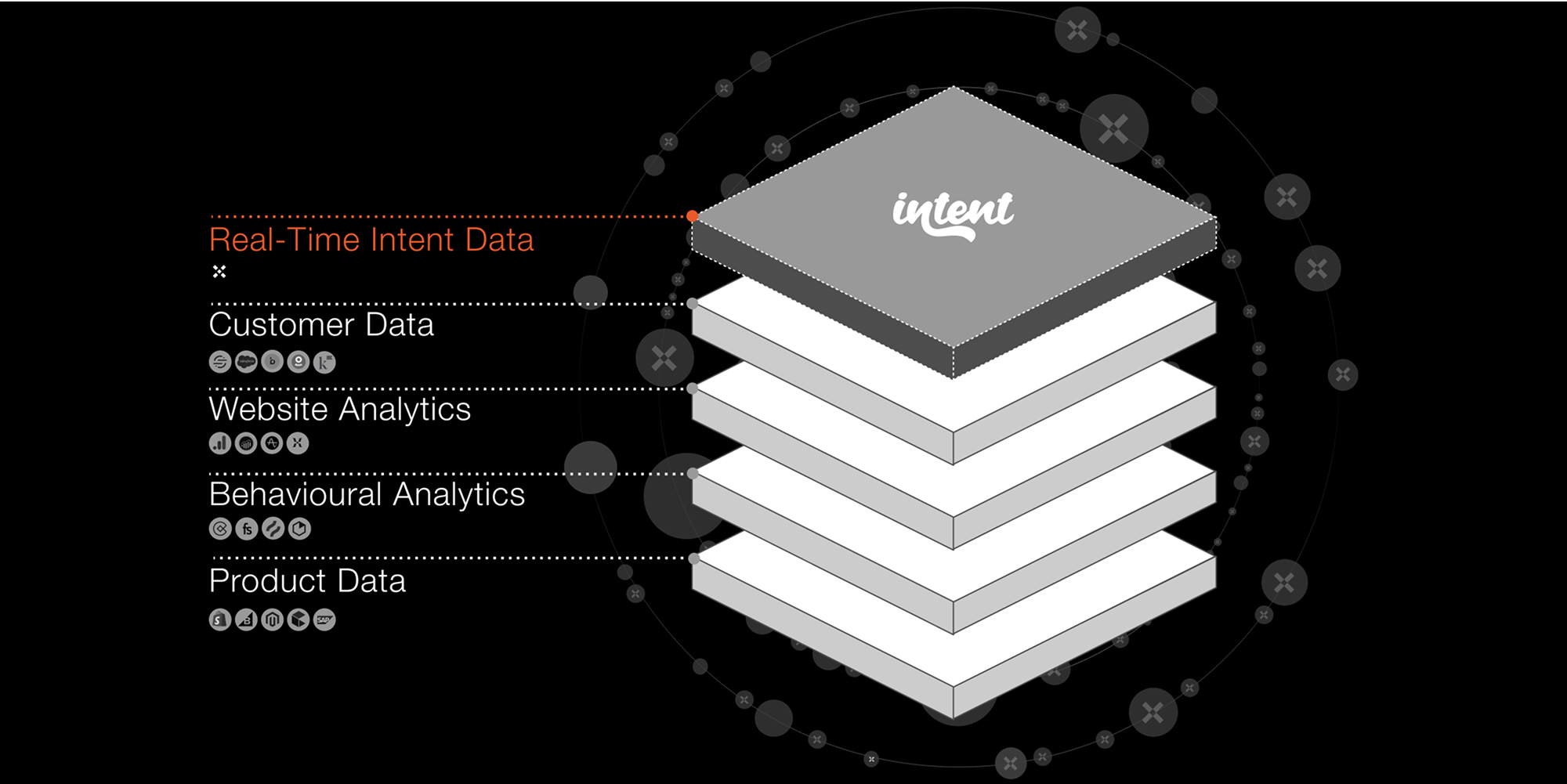⛺
Intent in a tent! February 24th 2026, at the O2, London. Sign up now
⛺
Intent in a tent! February 24th 2026, at the O2, London. Sign up now
⛺
Intent in a tent! February 24th 2026, at the O2, London. Sign up now
Real-Time Intent Agent for eCommerce
More human context, more commercial impact
Make your experiences more impactful by connecting them to your visitors’ intent.
Find 9.4% incremental revenue on average.
See Intent in actionSee Intent in action
Join the brands finding new growth with intent








See Intent in action
Get a quick walkthrough of what Made With Intent can do for you.
The Problem
Ecommerce growth is being held back by static rules and site-first data
Visitor context is missing.
What brands know about their visitors is based on attributes, page-level information and events that have already happened.
What brands know about their visitors is based on attributes, page-level information and events that have already happened.
Targeting options are limited.
How brands trigger tactics is limited to blunt page, event or timing rules. They are disconnected from actual in-moment needs.
How brands trigger tactics is limited to blunt page, event or timing rules. They are disconnected from actual in-moment needs.
Experiences are generic.
Brands give all visitors the same predetermined experiences at the same moments. They don’t keep up with purchase journeys and get tuned out.
Brands give all visitors the same predetermined experiences at the same moments. They don’t keep up with purchase journeys and get tuned out.


The Solution
Made With Intent gives you human context
unlocking growth you couldn‘t see before
Our agent interprets 800+ onsite signals in real time, just like how a sales assistant reads body language in-store.
By triggering experiences on these signals, not static rules, it helps brands lift purchase confidence by 24% on average.
Optimise
Deliver your current tactics at more impactful moments
Give your experiences the real-time context they’ve been missing. Simply create campaigns in our portal or connect to your tech through easy-to-use, guided workflows.
Use intent to quickly find the optimal timing for tactics, then add impact to every session with smarter targeting.
Use Cases
Your experiences + intent = more impact

With intent, you can only offer onsite discounts to visitors who need them.
Why offer discounts to those who are going to buy anyway? Save an average of 42% on margin by not discounting would-be buyers, while still targeting those who need an incentive.

With intent, you can ask for visitors’ emails at times where they are most likely to share it with you.
Why only ask for an email via pop-ups when a visitor lands, visits 3 pages or hits 30 seconds? Get 40% more emails of better quality on average, just by asking in appropriate ways at the right times.

With intent, you can surface the site features or products visitors need, right when they need them.
Why have all the discovery tools, then just expect visitors to discover them? See 30% more product engagement by highlighting recommendations, filters and search exactly when your visitors need them.

With intent, you can show your most relevant features at optimal moments, not when they add friction.
Why show scarcity messaging to somebody who isn’t looking to buy? Get 10% more feature conversion by only prioritising tools like social proof, chat or reviews if and when they help a visitor's needs.

With intent, you can only send abandonment emails to appropriate visitors and leave the rest alone.
Why risk annoying visitors who are not ready to buy? Increase campaign impact by 65% on average, by only following up with visitors who showed intent but may not return on their own.
Innovate
Target the opportunities you are currently missing
Your visitors shop in stages, not pages. Intent data lets you see this, so you can uncover overlooked value then target it with custom campaigns.
Get insights into where your visitors need help through reports or integrations, then prioritise intent-first experiences to drive sustainable growth.
Integrate
Push visitor intent data
to the tools you use

Add consistent, enhanced visitor context to your tests or insights, wherever you work. Push summaries or intent framework datapoints to your experience or data tech.

1 Script. 7kb.
ISO27001 Certified
Works on any eCommerce site
Pricing based on sessions
>10 billion modelled events
No Core Web Vitals impact
No PII
No extra cookies
1 Script. 7kb.
ISO27001 Certified
Integrates with data tools
Integrates with experience tech
>10 billion modelled events
No Core Web Vitals impact
No PII
No extra cookies
Here’s how it works
Get value from intent
in a matter of weeks
Step 1
Connect & Learn
Just add our script to your eCommerce site and you’ll have accurate, real-time intent data immediately. Our model will fine tune to your visitors in days.
Step 2
Prove Value
In the first month, we’ll help you understand intent data and launch your first experience in our Campaign Manager. By tracking impact vs a test or holdback, you’ll see ROI in 2-4 weeks.
Step 3
Scale
From there you’ll have everything you need to start scaling up intent. Our proven guides and expert team will be there to help you find new growth at every step.
Why eCommerce teams love intent
Read customer storiesRead customer stories
More of the brands unlocking growth with intent























